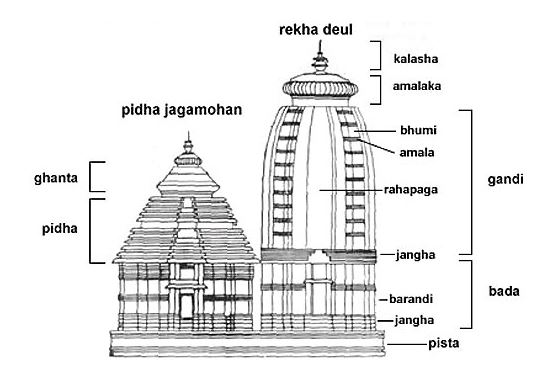From UPSC perspective, the following things are important :
Prelims level: Ratna Bhandar of Puri Jagannath Temple; Architectural features.
Why in the News?
After 46 years, the sacred treasury of Shree Jagannath Temple, Puri, known as Ratna Bhandar, was reopened amid years of legal battles, controversies, and debates.
About the Ratna Bhandar
- The Ratna Bhandar stores the gold and jewels offered by devotees to the deities Lord Jagannath, Lord Balabhadra, and Goddess Subhadra.
- It is located adjacent to the prayer hall on the north side of the temple.
- It consists of two sections: the ‘Bhitar Bhandar’ (Inner Treasury) and the ‘Bahar Bhandar’ (Outer Treasury), with the last inventory in 1978 noting significant amounts of gold and silver items in both chambers.
- Legend says, Odisha’s King Anangabhima Dev (1211 to 1238) donated 2.5 lakh madhas of gold to prepare jewellery for the almighty.
- The Odisha government passed the Jagannath Temple Act, 1952 to have a greater role in the temple’s management, which included maintaining an inventory of the offerings in the Puri collectorate’s Record Room.
Recent Developments:
- The safety of the Ratna Bhandar is managed by the Temple’s Committee, chaired by the titular ‘King of Puri’ and includes IAS officers and other state-appointed members.
- Originally, keys to the Ratna Bhandar were held by the Puri royal family, temple committee, and collectorate, with significant changes in ownership and access protocols over the years due to legal rulings.
- The recent reopening involved breaking the locks of the inner chamber as they could not be opened traditionally, following strict procedures.
About Jagannath Puri Temple
Its Architecture:
The temple has four distinct sectional structures, namely:
|
PYQ:[2012] The Nagara, the Dravida and the Vesara are the: (a) Three main racial groups of the Indian subcontinent (b) Three main linguistic divisions into which the languages of India can be classified (c) Three main styles of Indian temple architecture (d) Three main musical Gharanas prevalent in India |
Get an IAS/IPS ranker as your 1: 1 personal mentor for UPSC 2024

